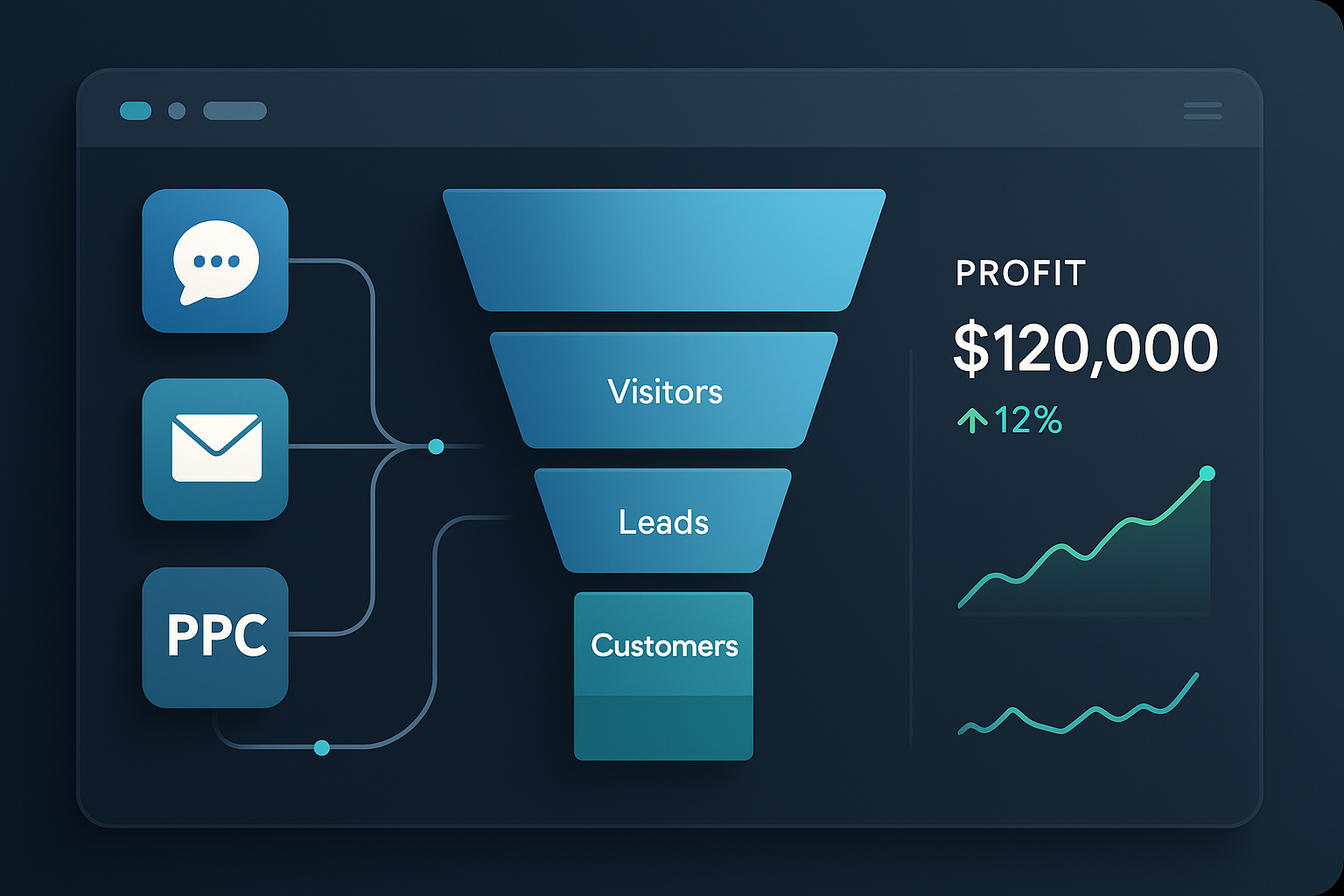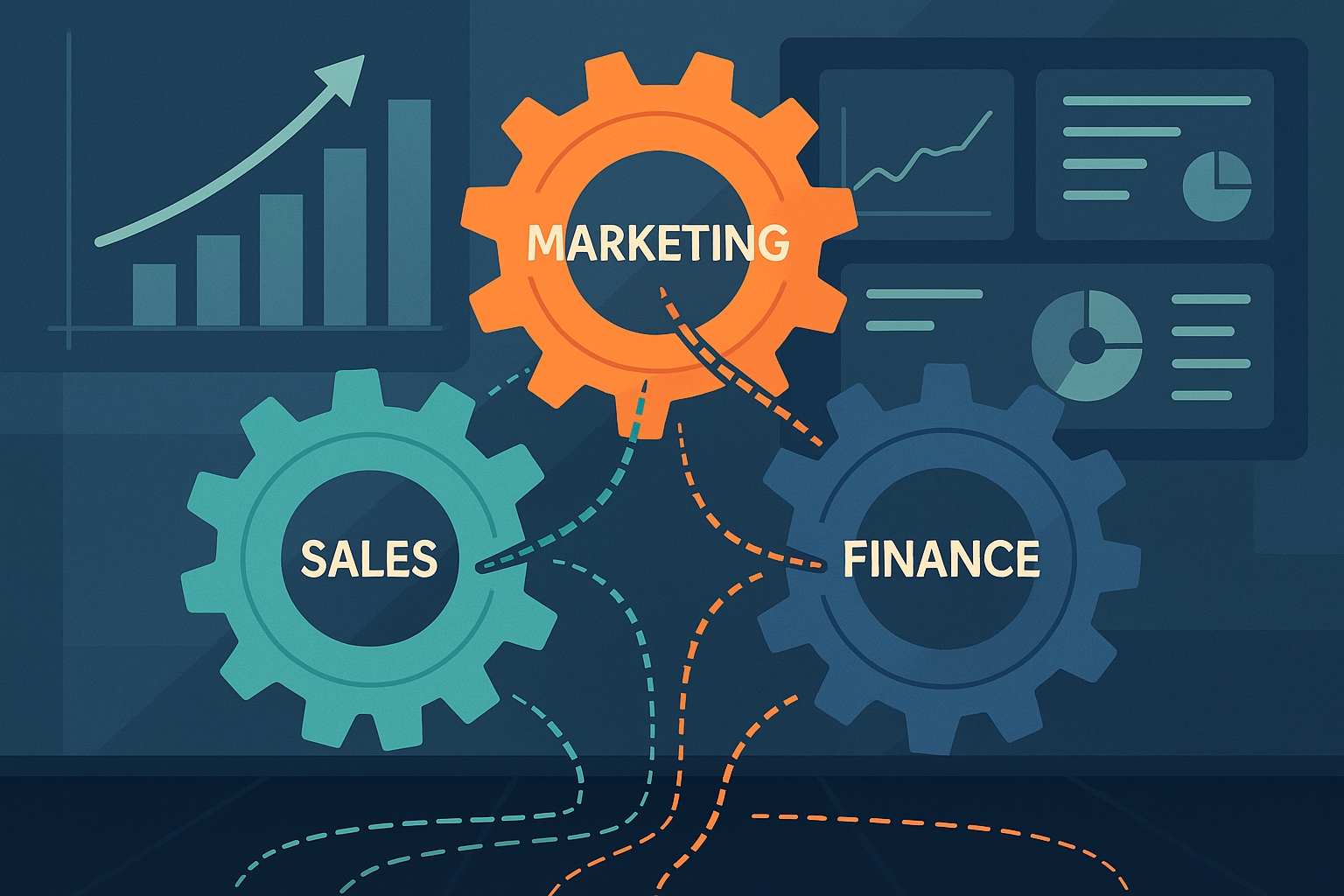The question keeping executives up at night isn't whether marketing is effective—it's demonstrating precisely how much profit each marketing dollar drives. With two decades of sales and marketing leadership under my belt, I've watched countless companies wrestle with the black box between marketing expenditure and bottom-line outcomes.
The Profit Attribution Problem
Old-fashioned marketing reporting tells you about clicks, leads, and conversions. But what about the $500-spender customer who generates $2,000 in revenue but only gives you $200 in net profit after deducting all costs? With profit attribution automation, you're not flying blind.
Most businesses track marketing ROI by revenue only. This creates a misleading appearance of success while behind-the-scenes costs secretly erode profitability. The result? Marketing budgets that look wonderful on paper but can't drive sustainable growth.
Automation of Revenue Tracking: Breaking Past Surface Measurements
Emerging revenue tracking automation technology links each touch point along your customer journey with real financial outcomes. That is, automatically relating:
- First-touch marketing touch points to final purchasing decisions
- Customer lifetime profitability to customer acquisition costs
- Real profit margins to channel performance
- Attribution to complex, multi-touch customer pathways
The epiphany occurs when your marketing platform calculates customer profitability automatically, not revenue. Now you realize that your top-performing campaign could be your least profitable one.
Creating Your Automated Profit Engine
To succeed at marketing ROI automation, you need three essential elements:
1. Unified Data Integration
Your financial systems, customer service systems, marketing automation, and CRM must talk to each other. When the systems automatically share data with each other, you eliminate the manual reporting that introduces delays and inaccuracies.
2. Real-Time Profit Attribution
Advanced automation tracks every customer touchpoint and computes the true profit impact of each marketing channel automatically. This isn't first-touch or last-touch attribution—it's understanding the complete profit narrative.
3. Predictive Profit Modeling
The latest systems leverage a profit performance history to predict future customer value, automatically optimizing marketing spend allocated to prospects most likely to deliver long-term profitability.
The CFO-CMO Alliance
When marketing ROI automation is integrated with your accounting systems, CFOs start to cease seeing marketing as an expense but as a profit center. This automated visibility creates unprecedented alignment between marketing investment and business outcomes.
Implementation Without Disruption
The secret to successful implementation of revenue automation is to begin with your current systems and build out capabilities incrementally. Start by integrating your marketing automation platform with your CRM, followed by adding financial data integration.
Basic profit attribution automation can be accomplished by most companies in 90 days with current tools, with increasing sophistication over time. Perfection is not the aim—it's forward motion toward total visibility.
Your Next Step
Lastly, cease to pedestal marketing measurement as art. Revenue automation makes marketing accountability shift from quarterly guessing to day-to-day profit optimization. When all marketing decisions are guided by automated profit data, growth becomes predictable and sustainable.
Those companies thriving in the current competitive market are not simply measuring marketing performance—what they are actually doing is automating the entire process from marketing investment to proven profitability.
Ready to transform your marketing ROI from unknown to expert? Join us in bridging your marketing spend to actual profit with POPai Automation.




